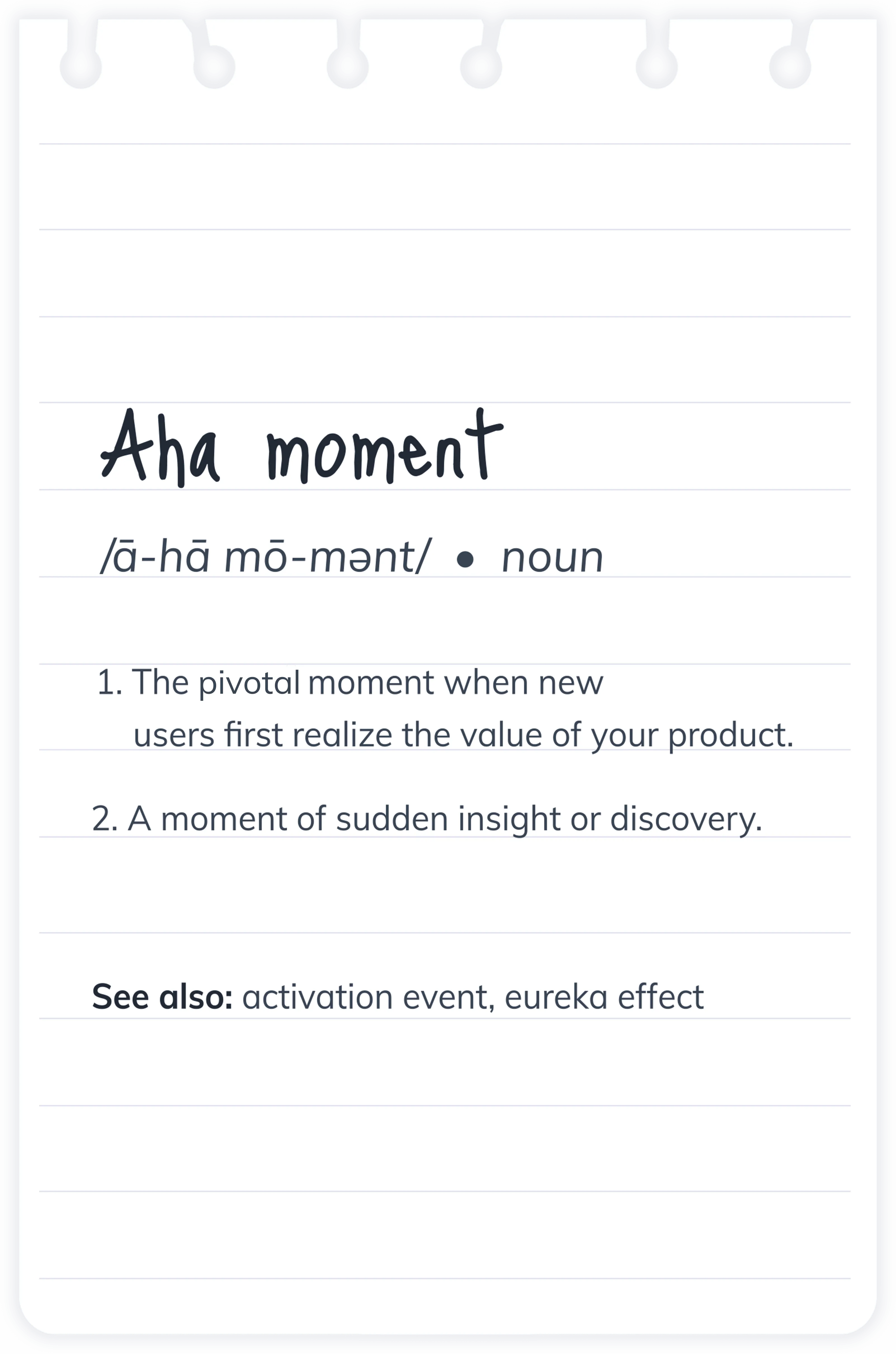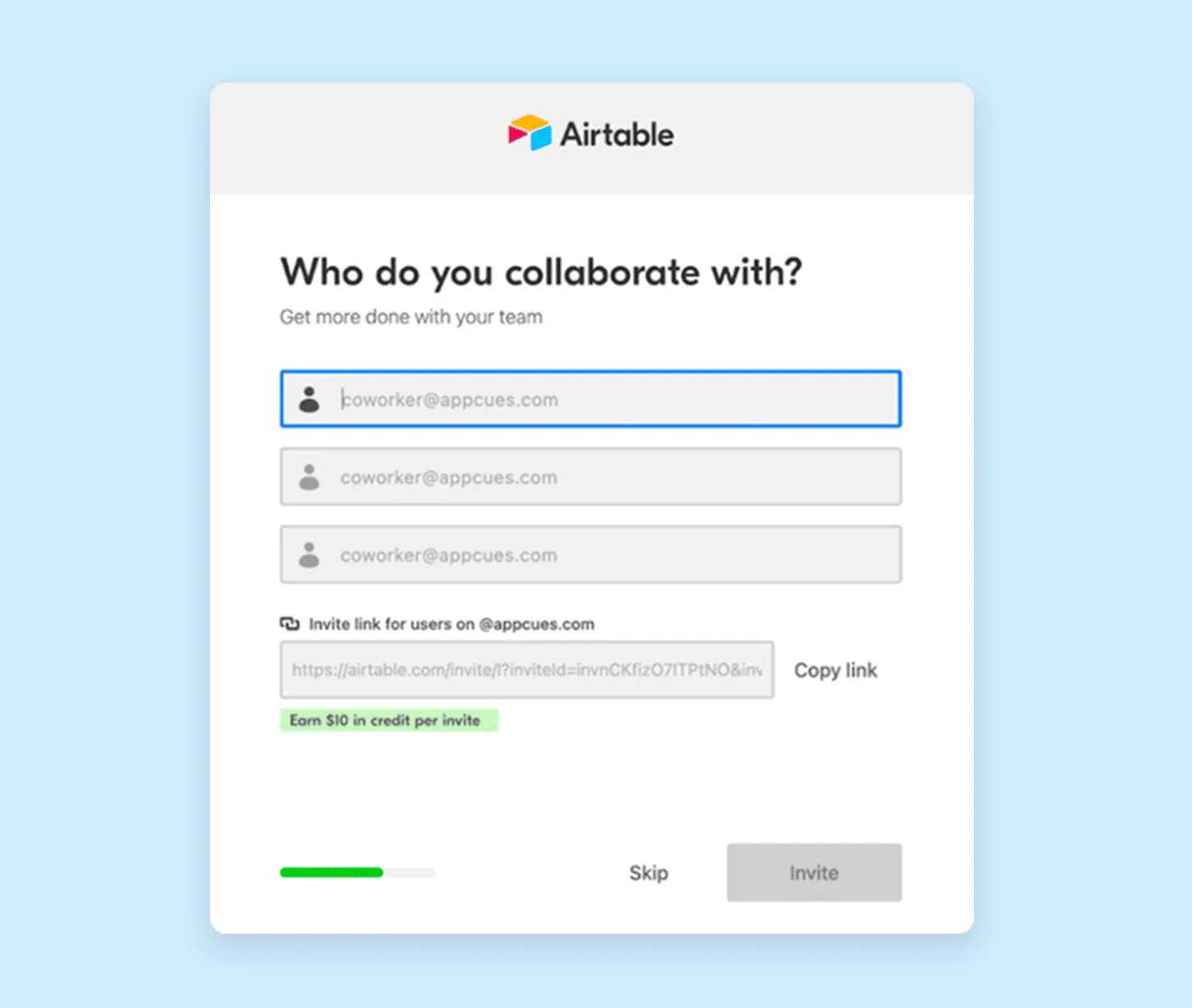

You don’t get a second chance at making a good first impression. Learn how to effectively guide your new users, and ensure that your product becomes their next favorite tool.






We’ll begin by talking about why user onboarding matters and what it looks like (the good, the bad, and the just plain annoying). Then we’ll move on to some best practices and introduce a collection of familiar patterns to inspire your own onboarding flows. You’ll create a user journey map, learn a bit about building in-house vs. outsourcing, and end the course with some tips on metrics and testing. Capeesh?













When you finish this course, you can humble brag about it for weeks. But that’s not all. We’ll send you a shareable certification and some fun (and practical) goodies. 😎

The activation event (also known as an activation metric) is the first point in your product where you deliver the value that you promised your user. The percentage of people who reach your activation event = your activation rate. This is a key metric to track and improve for user onboarding.

In software, the aha moment is the pivotal instance when a new user first realizes the value of your product and why they need it. It’s often accompanied by, “Oh wow. This is awesome.”

An adjective that describes anything living inside your product (not exclusive to mobile apps).

An in-app experience that welcomes a new user to your product and guides them to value. It’s typically made up of some combination of modals, tooltips, etc.

In the world of UX, personalization is the process of creating unique experiences tailored to each user. You can use data willingly declared by the user or data from a third-party tool to make your product feel more relevant and, well, personal.

The concept of placing users in different groups based on use case, behavior, etc., so that they can be better targeted with relevant experiences and information. For example, new users should not get the same messaging as power users who’ve been around for a long time.

This is the time it takes for a new user to recognize the value of your product or service. When it comes to user onboarding, your goal should be to shrink your users’ time to value.

A visual representation of a user's interactions (across all channels) with your brand or product—from their point of view. It shows the whole process from the moment a person learns about your product, through becoming a customer, to the point at which they stop using it.


